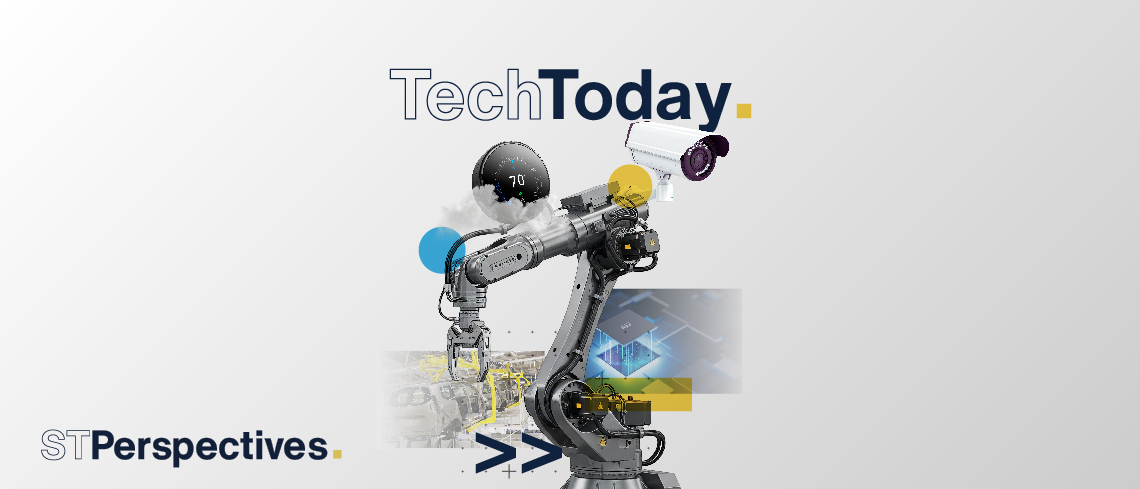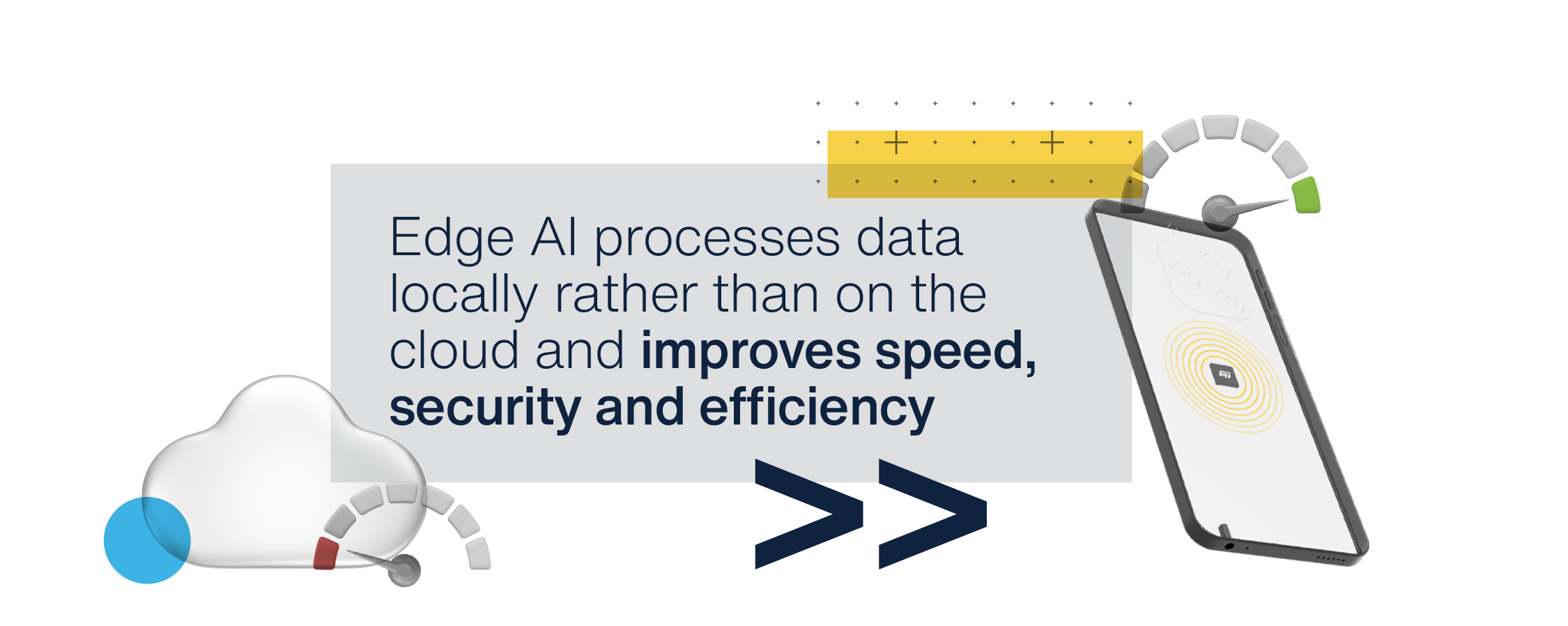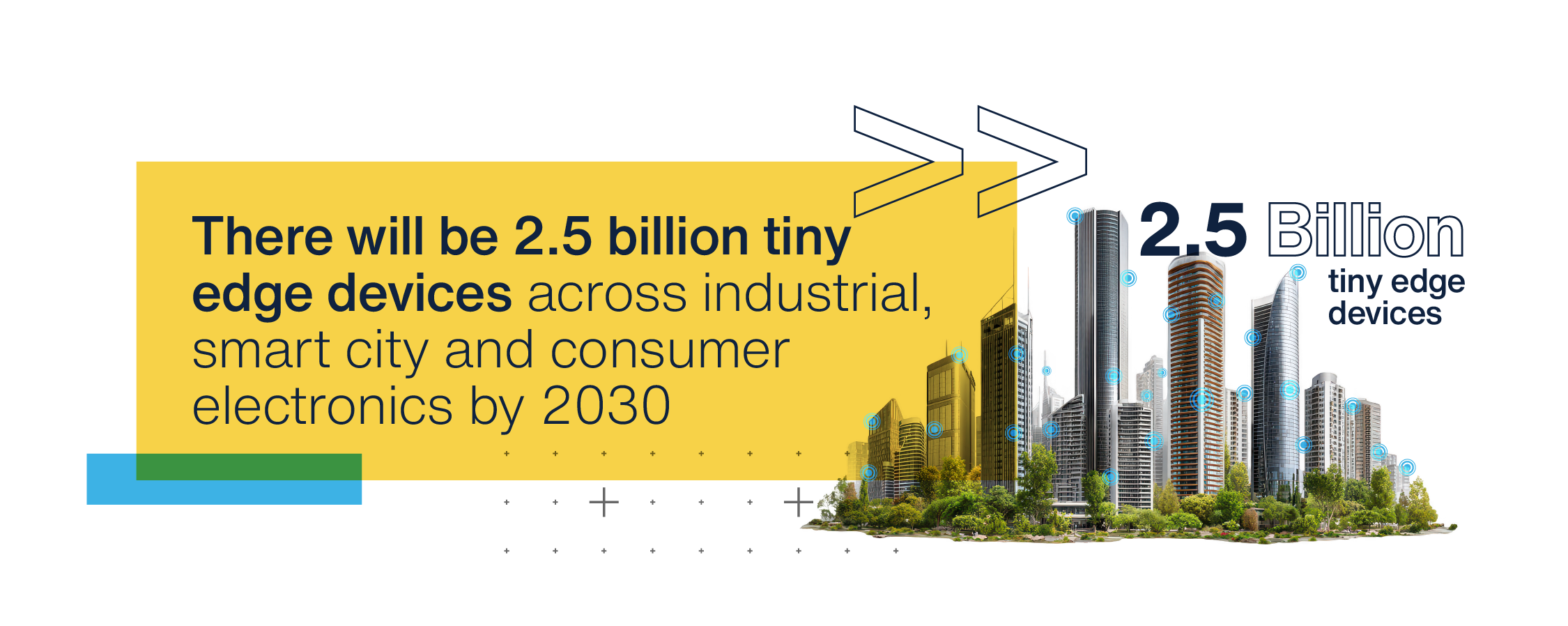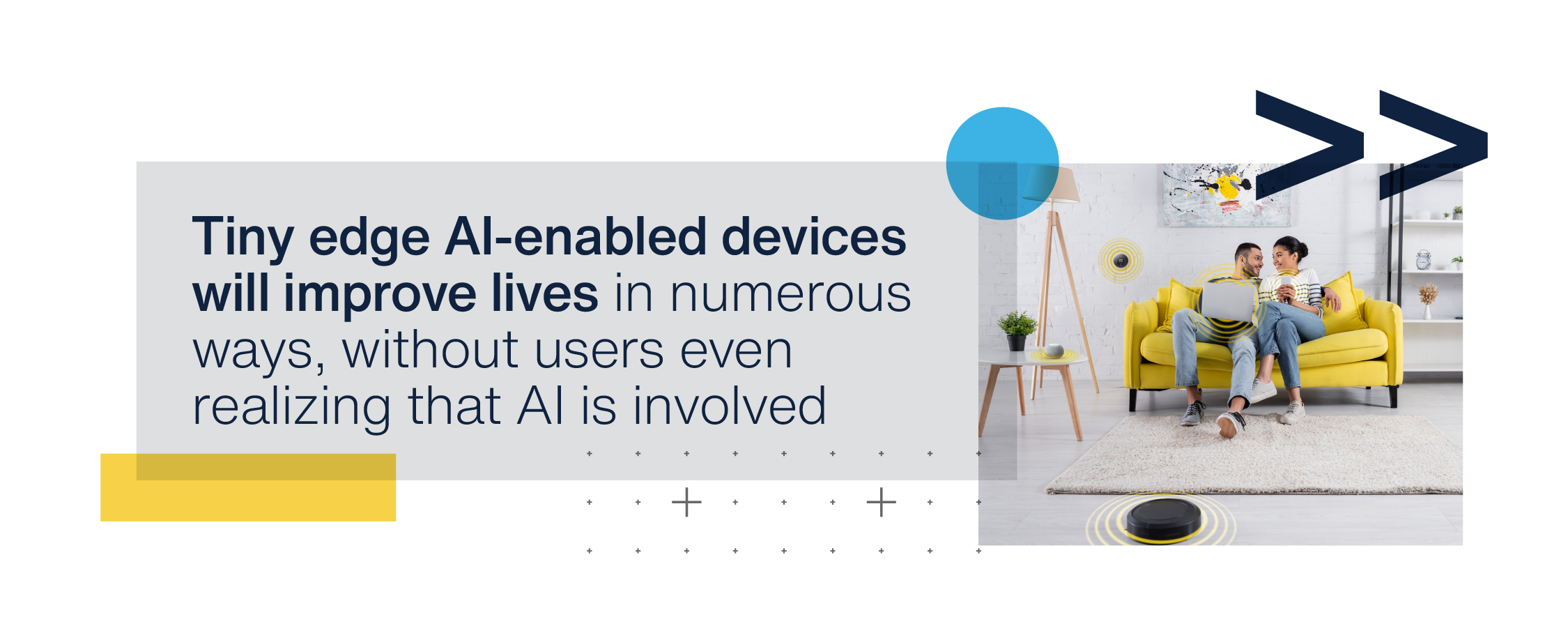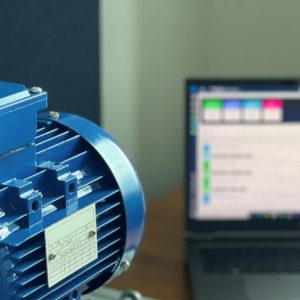Edge AI, the deployment of artificial intelligence (AI) directly on devices near the data source, allowing data to be processed and analyzed locally rather than in the cloud, is reshaping how intelligence is built into everyday devices. By processing data locally rather than relying on the cloud, edge AI improves speed, security and efficiency while opening to door to new applications, from industrial sensors and smart infrastructure to healthcare devices and consumer electronics.
This article explores edge AI, why “tiny edge” systems are emerging as a critical frontier, and key considerations for developers as billions of connected devices gain the ability to ‘think’ for themselves.
Edge AI to enable smarter and more secure devices and applications
Large-scale AI workloads demand enormous data-center resources. For smaller industrial and consumer applications, whether a smart refrigerator in your kitchen, an autonomous factory robot, or a medical device, pushing all data and inference to the cloud is neither economical nor sustainable.
With edge AI presenting the opportunity for local inference, ultra-low latency, and smaller transmission loads, we can realize improvements to data privacy and security, cost, and power efficiency when building AI-enabled applications. Many of these will also take advantage of edge AI’s ability to operate with limited or no need for network connectivity to transfer data to the cloud. Processing data locally will bring AI-enabled applications to new, remote corners of the world.
We are already seeing edge AI contribute towards significant productivity improvements for smart buildings, asset tracking, and industrial applications. For example, industrial sensors and microcontrollers are being embedded with edge AI for quicker fault detection, enhancing predictive maintenance capabilities, by identifying when a device’s condition will change, creating an alert for personnel or automatically triggering remedial action before a fault occurs.
The next generation of hardware products enhanced with edge AI capabilities will impact every sector, from industrial to healthcare, from automotive to consumer goods. These will bring improved security, where AI sub-systems are created as part of the security architecture from the initial design, and enhanced data privacy, where data it held solely on a device throughout its collection, processing, and analysis.
Enabling intelligence at the edge
The evolution of embedded systems introduces edge AI into the device architecture, creating what we call its “tiny edge”. This refers to tiny, resource-constrained devices that process AI and ML models directly on the edge, within devices, including microcontrollers and embedded sensors, enabling real-time data processing with minimal power consumption and low latency.
A new class of software and hardware has emerged on the tiny edge, giving the possibility to execute AI operations within devices. By embedding this capability within the architecture from the start, the ‘signal’ itself becomes the data’, rather than wasting resources transforming and transferring it to cloud computing resources.
Tiny edge AI-enabled sensors gather data directly from the environment a device is operating within and can leverage the in-chip engine to produce a result. For example, in solar farms, sensors within a solar panel can specifically detect nearby arc faults across power management systems, sending this to relevant microcontrollers. When extreme voltages occur, these microcontrollers can automatically trigger a shutdown failsafe and avoid an electrical fire.
In the smart home, gesture recognition is an ideal use case for tiny edge devices embedded in light switches or remote controls, while smart energy meters can learn usage patterns and optimize energy management locally. Within vehicles, sensors will play a critical role in safety, for example identifying driver distraction, where minimal latency is essential.
In healthcare and wellbeing, in addition to wearable devices becoming more powerful, measuring a greater variety of bio signals and responding to these, greater intelligence will be found in increasingly portable medical devices. For example, portable ultrasound machines and blood chemistry analysers will use tiny AI to enable faster diagnosis on-device and on-site. Critically, in these use cases, patient data will remain local and secure.
In the coming years tiny edge AI will become embedded in almost every type of system and device. Analyst firm ABI Research predicts that there will be 2.5bn tiny edge AI devices by 2030, across industrial, smart cities, and consumer electronics applications. The potential applications are endless, and we are already seeing increased R&D focused on the opportunity.
Building edge AI platforms
To capitalize on the opportunity, product developers must first consider the quality and type of data provided to edge devices, as this determines the level of processing, software, and hardware required to deal with the workload. Some applications will benefit from AI-accelerated microcontrollers, enabling the use of more demanding neural network algorithms and complex edge AI processing. In other applications, the smaller AI models supported by standard ultra-low power MCUs will be sufficient.
For example, audio and video information are extremely complex and need a deep neural architecture to analyze the data. On the other hand, the requirements are comparatively low when processing data generated from text and images, so developers can utilize tiny AI algorithms within a resource-constrained or ultra-low power, low latency device. It is also important to consider the class of device needed based on the specific computational power requirements. In many cases, less is more, and running a lighter, tiny AI model improves the power efficiency and battery life of a device.
An edge AI-enabled world
The demand is there, with edge AI already transforming product development, redefining what’s classified as a valuable piece of technology, enabling more personalized predictive features, enhancing security, and improving contextual awareness. In just a few years, this type of AI will become vital to the everyday utility of most technologies.
The development of devices that embed AI into the tiny edge is accelerating and the use cases are almost infinite, from intelligent public infrastructure making use of millions of intelligent sensing and control units, to remote patient monitoring through non-invasive wearables in healthcare. Tiny edge AI-enabled devices are starting to improve lives in numerous ways, without users even realizing that AI is involved. The broader ecosystem of development tools, hardware platforms, and software resources is in place, supporting the creativity and vision of product developers. Edge AI is the catalyst for unlocking more value from everyday objects, in every environment.
- Visit this page to read more about ST’s current Edge AI Suite


